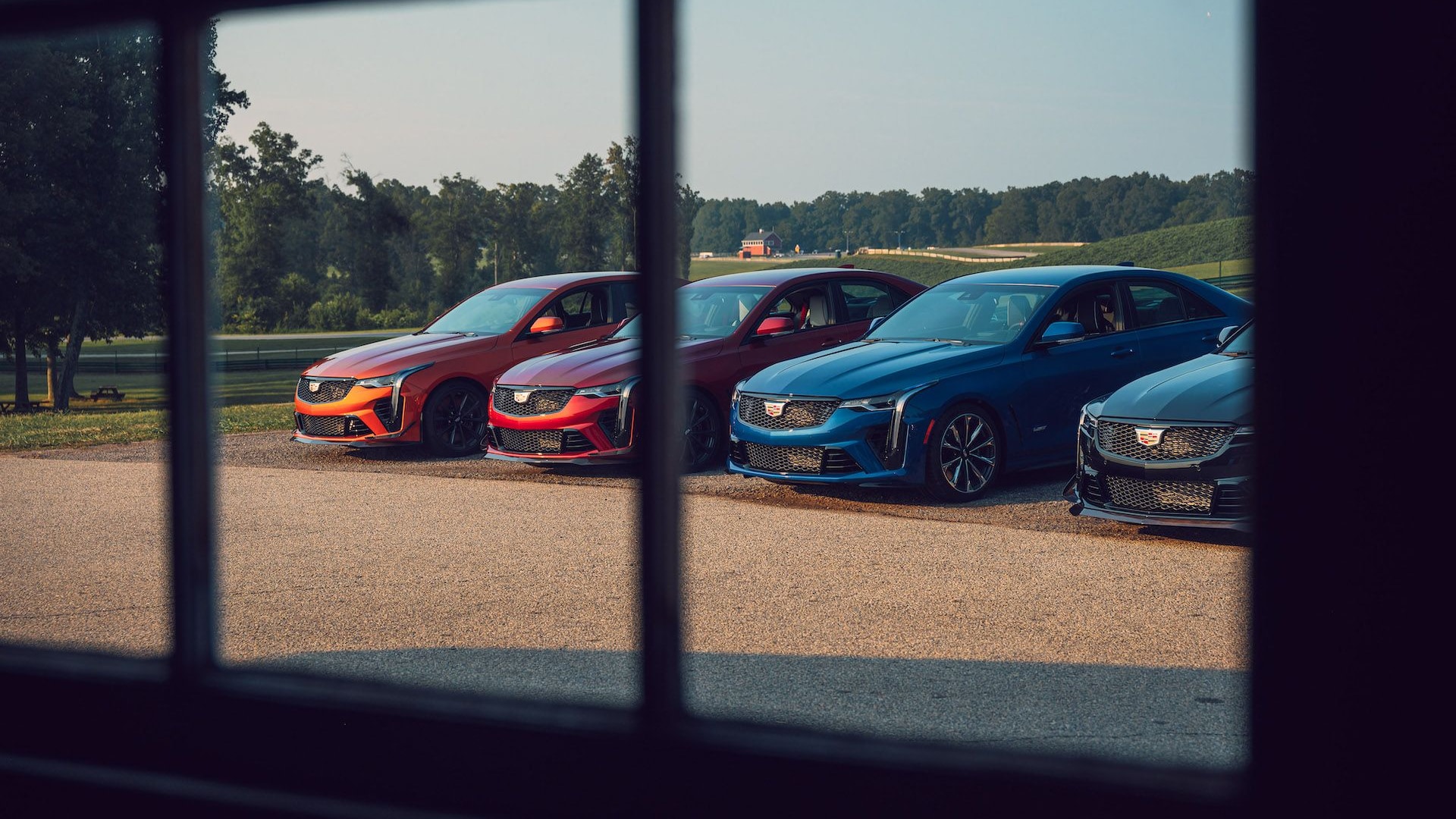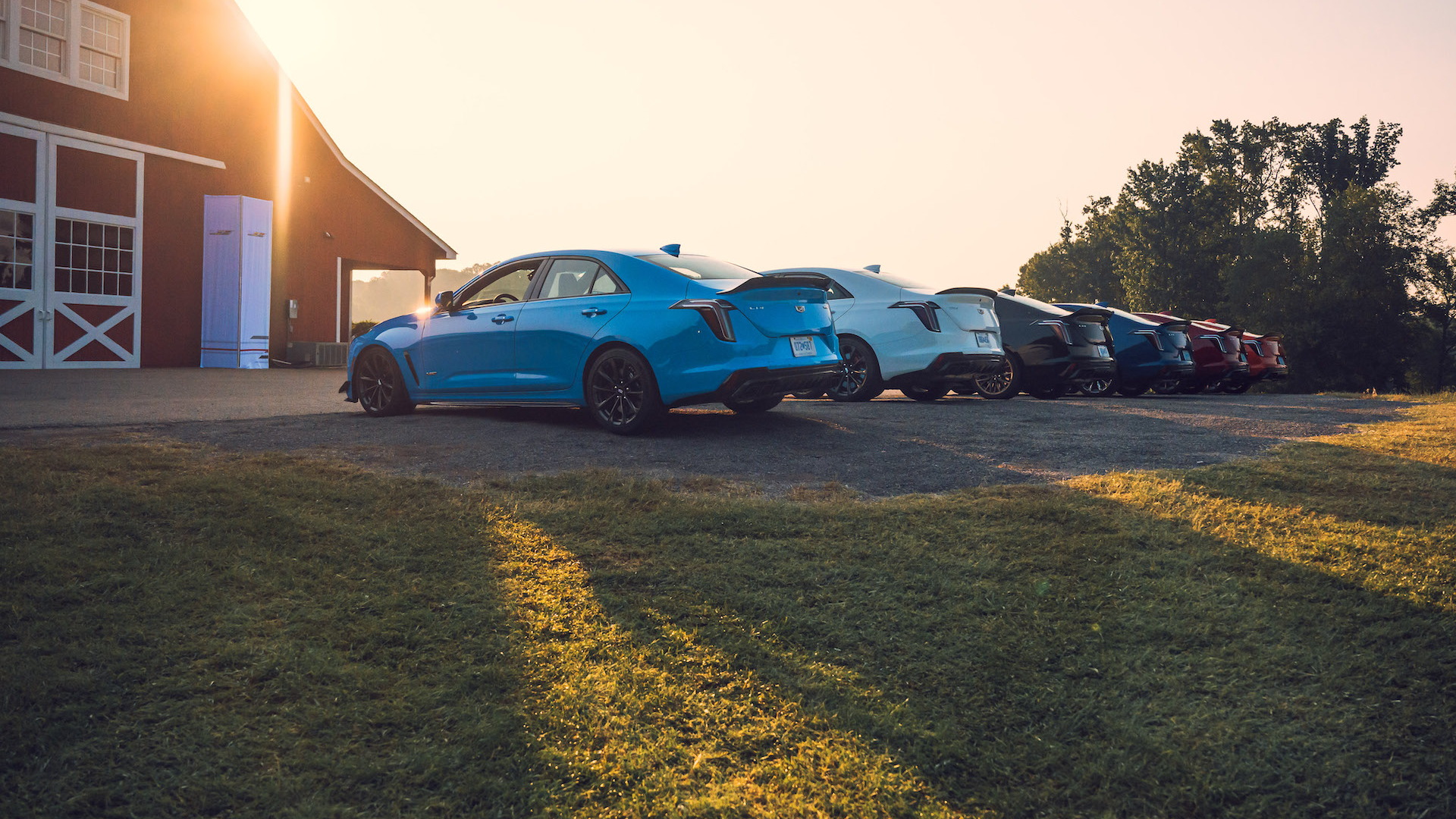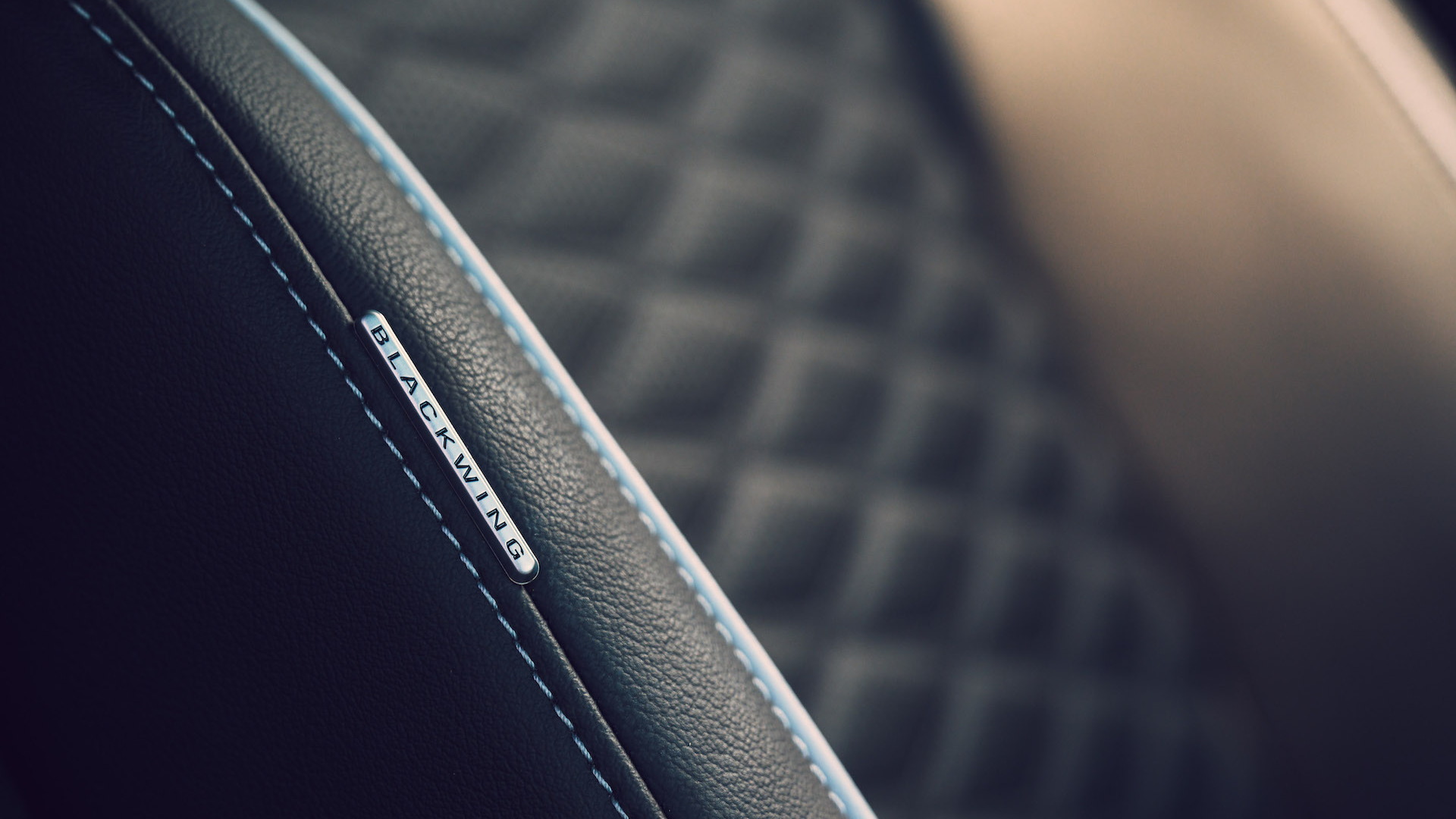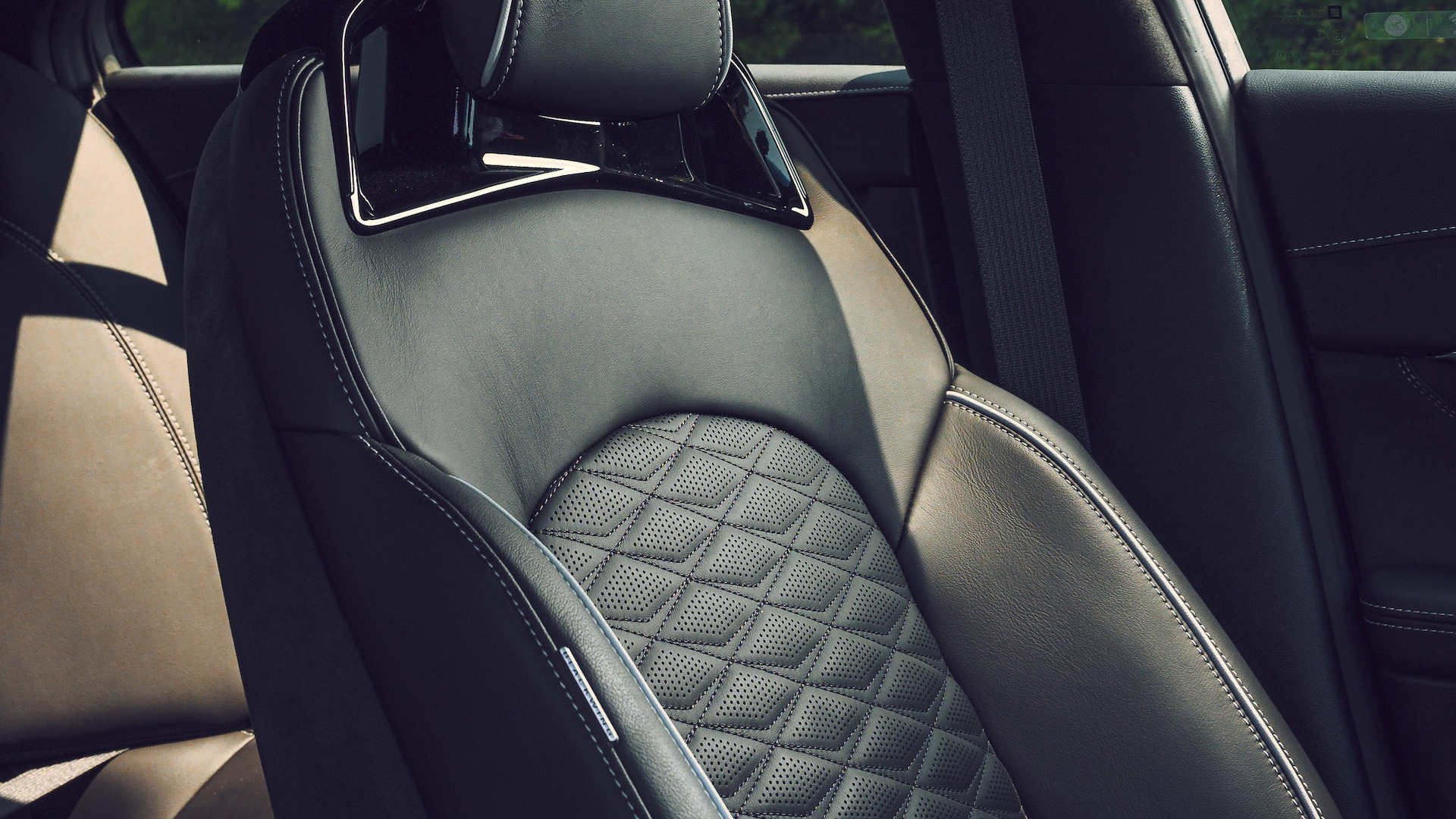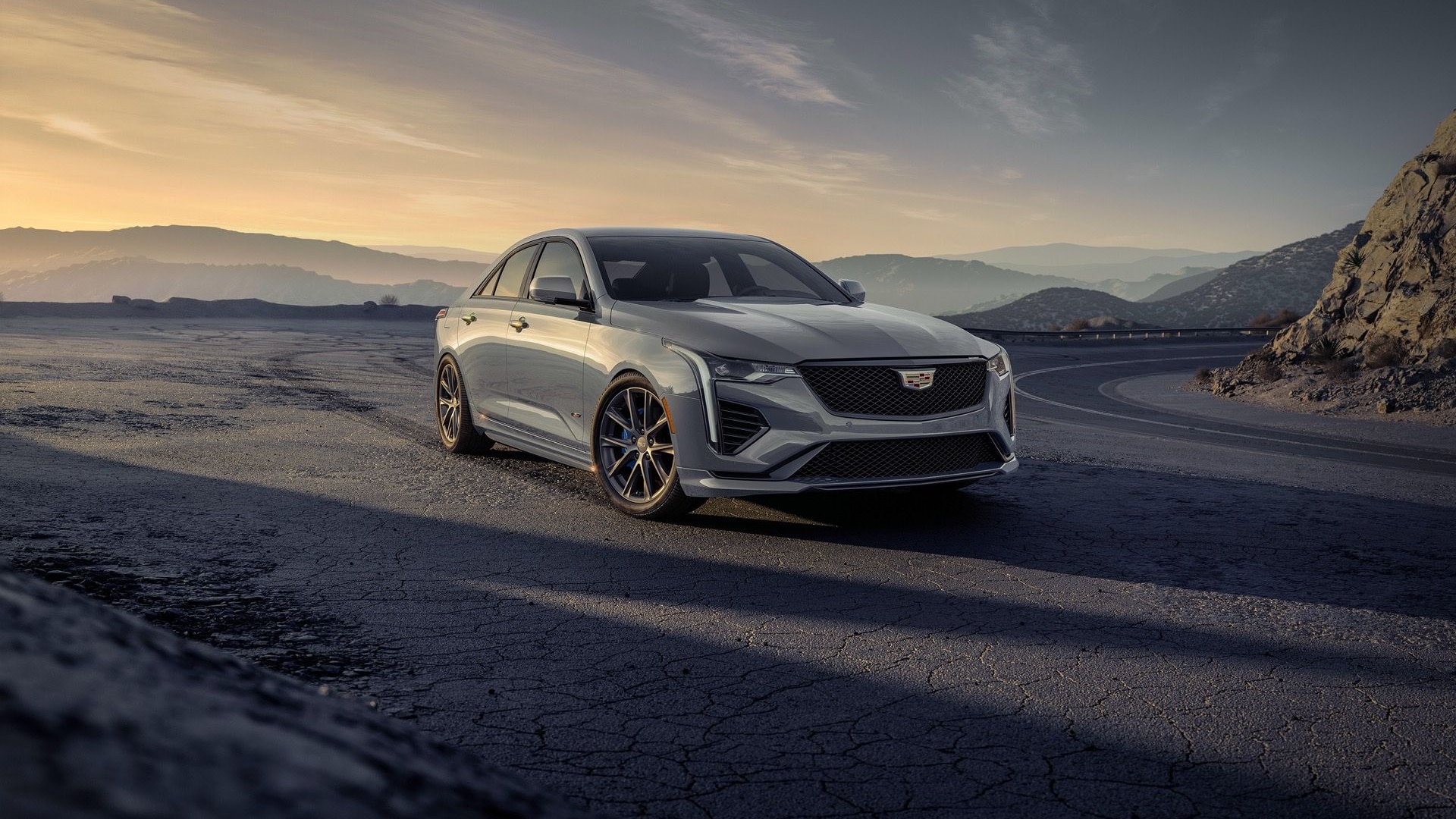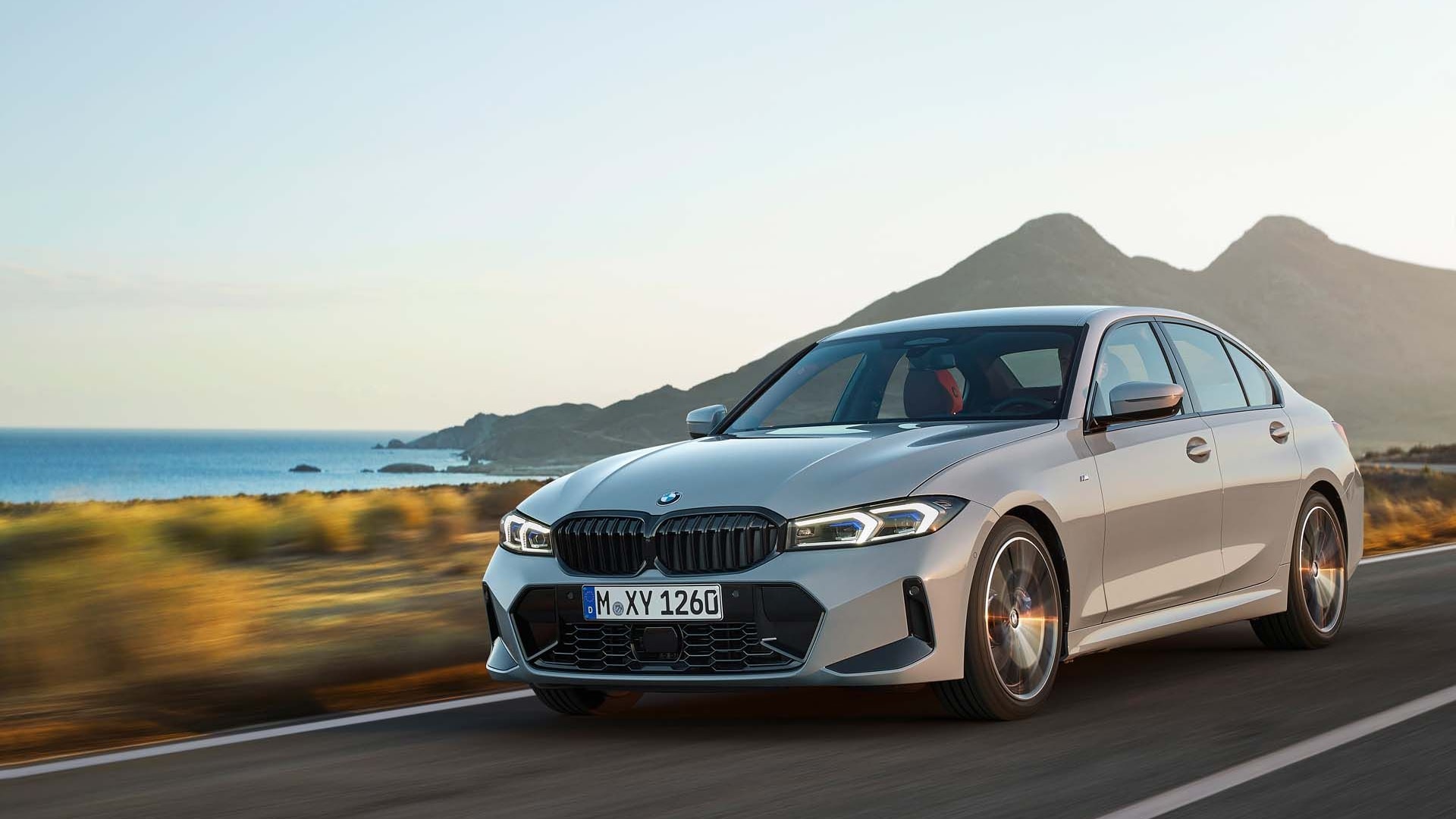Peering over the red 12 o’clock stripe on the chunky leather-wrapped steering wheel of the 2022 Cadillac CT4-V Blackwing, I’m watching a pair of yellow wings flash together on the head-up display. They’re telling me it’s time to shift the 6-speed manual as I approach turn 1 at Virginia International Raceway’s South Course. I keep my right foot flat to the floor, clutch in, and quickly shift up to fifth somewhere north of 120 mph. A fuel cut-off algorithm triggered when I engage the clutch enables the no-lift shifts that bring a smile to my face every time I use them.
The speedometer and head-up display read 134 mph when I jam on the brakes and downshift to fourth, then third, and finally second for the 180-degree right-hander. Another shift program—downshift rev matching—creates smooth gear changes that my limited heel-toe ability can’t match and keeps the car steady as I scrub off 95 mph.
The brake pedal is firm but progressive in the V mode’s Track setting, the nose tucks in nicely for the late-apex turn, and the rear end follows dutifully as I spy the weed that has conveniently grown on the inside of the turn right where I’d set an apex cone.

2022 Cadillac CT4-V Blackwing

2022 Cadillac CT4-V Blackwing
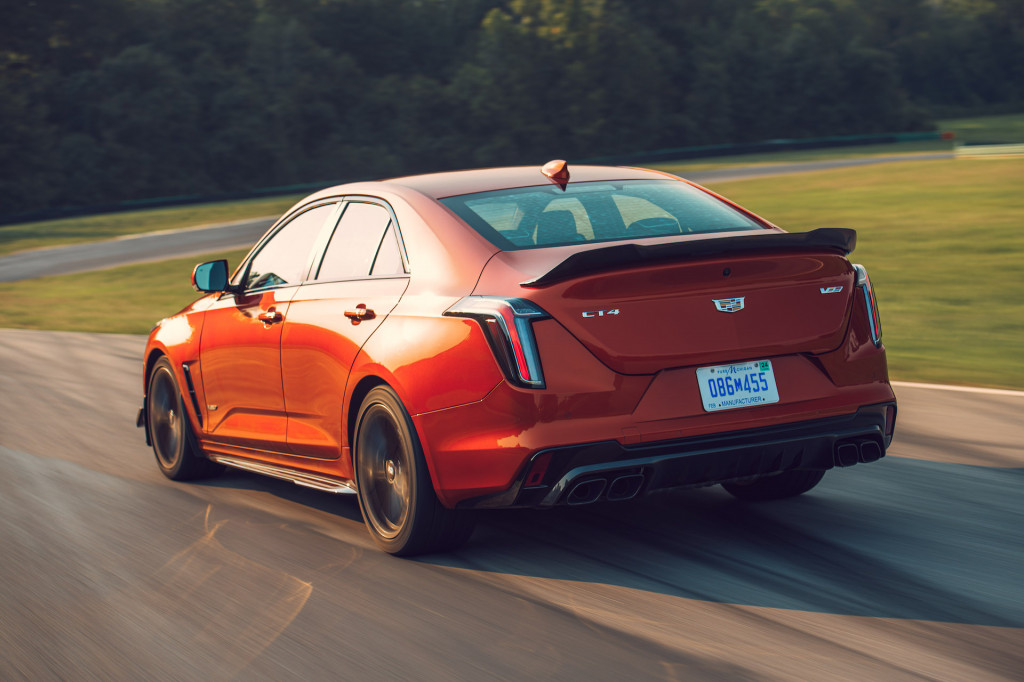
2022 Cadillac CT4-V Blackwing
Next up is the undulating 3a, 3b, 4 left-right-left complex that challenges the car’s agility and traction. The sedan stays neutral through the corners, trying to neither plow forward or spin in a fit of oversteer. The fourth-generation Magnetic Ride Control dampers fight against physics to keep the car fairly flat and help send the weight side to side and back again. Controlled by sending a magnetic pulse through fluid infused with metal shavings, the dampers can react 1,000 times per second, which Cadillac says makes them the quickest active dampers on the market. They’re certainly doing the job now.
The 255/35R18 front and 275/30R18 rear Michelin Pilot Sport 4S tires grip hard, thanks to an R compound on much of the tread and Cadillac’s track alignment (as delineated in the owner’s manual) that gives the front tires 2.5 degrees of negative camber to increase tire contact patch through turns. The standard alignment is a still aggressive 1.2 degrees of negative camber.

2022 Cadillac CT4-V Blackwing aerodynamics

2022 Cadillac CT4-V Blackwing aerodynamics

2022 Cadillac CT4-V Blackwing aerodynamics
Aerodynamics help keep the car planted, too, especially in higher speed turns. This car is outfitted with the optional Carbon Fiber package that gives it a net downforce of 169 lb at 180 mph. It includes a front splitter, front canards, front dive planes, a rear diffuser, and a fairly tall rear spoiler. These components work with a front underwing and mid-underbody panels to smooth out the air, balance the aerodynamics, and fight against all the lift created by the open front grille and side intakes that route air to the car’s many coolers.
The body structure only enhances the experience. The CT4-V Blackwing rides a reinforced version of GM’s Alpha II architecture. It’s a fantastic platform that debuted on the car’s successor, the ATS, and also helps make the Camaro so nimble. It features double-jointed MacPherson struts up front and a five-link rear suspension. Versus the standard CT4-V, the Blackwing adds braces from the firewall to the strut towers and from the strut towers to the radiator support, a lower front shear plate, an additional front cradle attachment, a box section rear cradle support bracket, and upgraded rear longitudinal rails. These changes increase the car’s overall rigidity, and increase local rigidity, especially up front. The result is a front structure that’s tied together even better than a standard V model to create sharp turn-in response and improved behavior when confronted with lateral loads.
Those lateral loads are also managed by the six modes of GM’s Performance Traction Management: Inactive, Wet, Dry, Sport, Race 1, and Race 2. I start in the default Inactive setting, which isn’t intrusive when it cuts the power and activates the stability control. I later move to Sport mode, which allows controlled slides through turns, but I hold off on engaging the Race modes that shut off stability control entirely.
After the front end carves the corners the rear end pushes the car out of them thanks to an electronically controlled limited-slip differential. It sends the power to the tire with grip and locks up when I straighten the wheel to shoot the car forward.
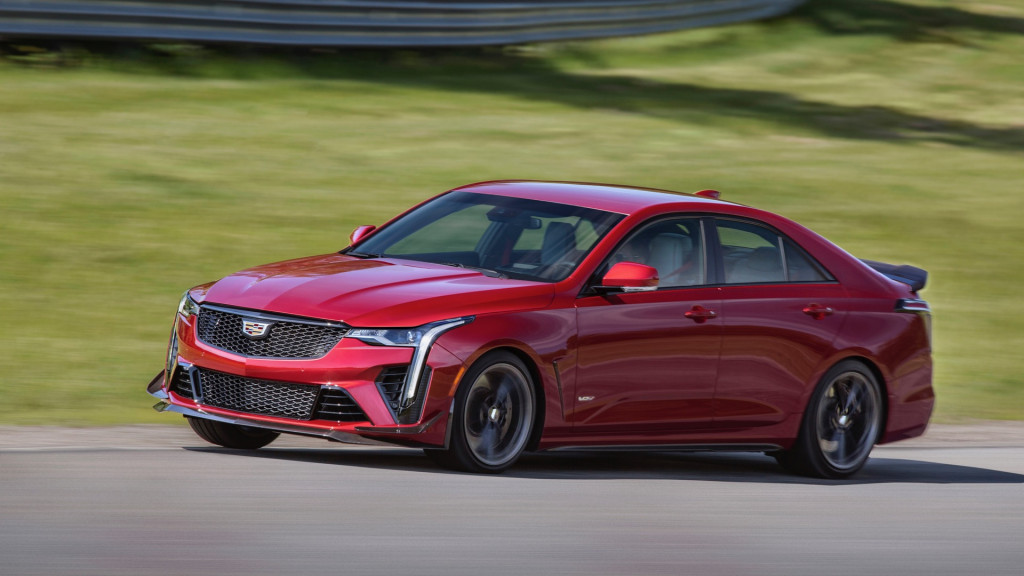
2022 Cadillac CT4-V Blackwing aerodynamics
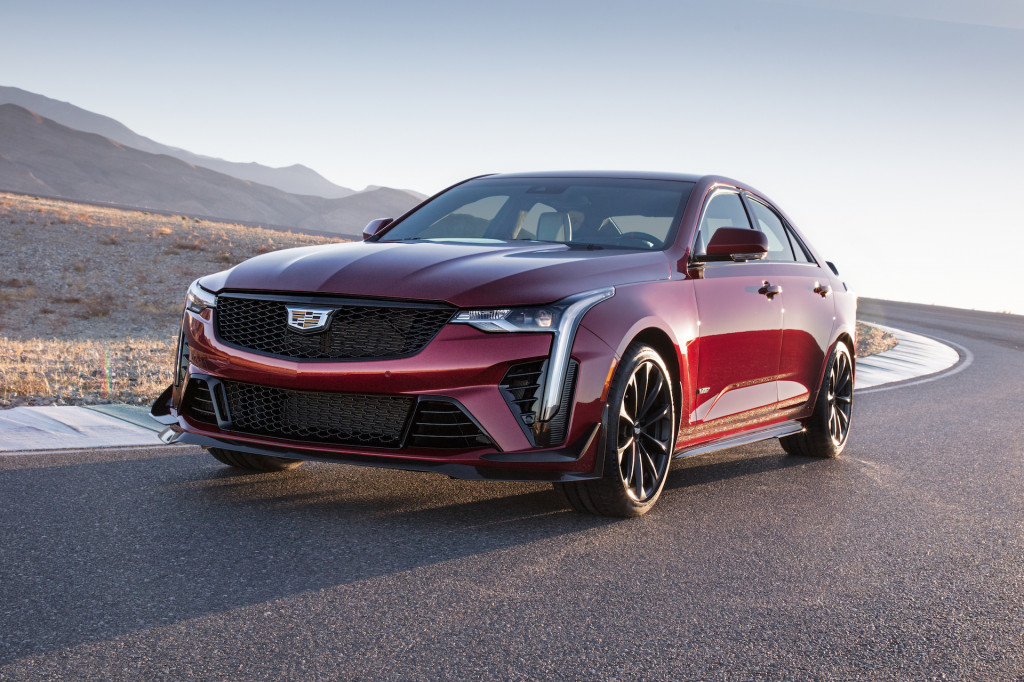
2022 Cadillac CT4-V Blackwing
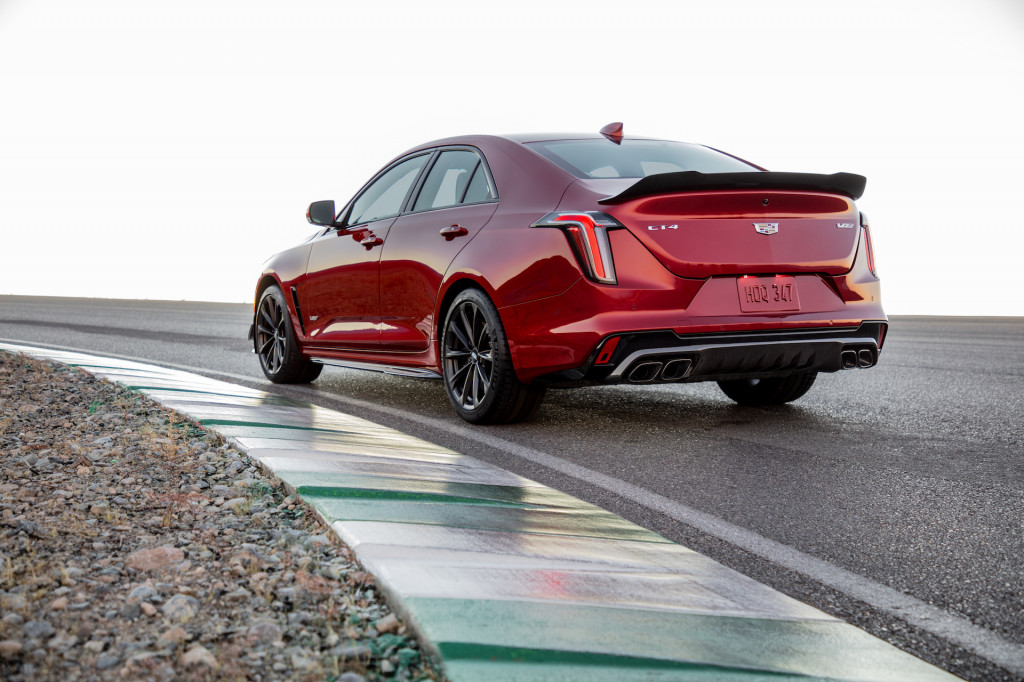
2022 Cadillac CT4-V Blackwing
The engine is little changed from the version in the ATS-V. It’s a twin-turbocharged 3.6-liter V-6 that spins up 472 hp and 445 lb-ft of torque. Torque doesn’t change, but this car has 8 more hp thanks to a 39% decrease in intake restriction, titanium connecting rods, twin low-inertia turbos, and revised computer software. It’s a gem of an engine that revs freely up to 6,500 rpm, thrums melodiously during heavy acceleration, pops and burbles on over-run, and blats between gears. More importantly, it launches the car from 0-60 mph in just 3.9 seconds with the 10-speed automatic or 4.1 seconds with the manual, and pushes it to a top speed of 189 mph.
The manual’s party tricks may be fun, but automatic cars are faster around the track. During my run in an automatic car, I use the V mode’s most aggressive engine and transmission setting, but the 10-speed automatic triggers an even more aggressive performance shift algorithm during the first heavy braking event. Cadillac claims its automatic shifts 37% quicker than Porsche’s dual-clutch transmission, and the way it fires off shifts as I build speed makes me think that bold statement is at least plausible.
Corner after corner, the CT4-V Blackwing responds playfully to my inputs through sharp, stable steering and big, sturdy brakes. The iron brakes feature 6-piston front calipers that clamp 15-inch rotors and the 4-piston rear calipers with 13.4-inch rotors. Again, Cadillac is stacking the deck by using high-temperature brake fluid for these track cars (that’s a good idea for a track day anyway), and the brakes show no fade after two and a half hours of track driving. This car also has a pair of plastic ducts in place that attach to the rear suspension to cool the brakes; they come in the trunk of every CT4-V Blackwing and I recommend installing them on day one.
The CT4-V Blackwing is also fun on the street. The standard Magnetic Ride Control dampers have an excellent spread of firm and soft that makes for a comfortable commute. Opt for the manual transmission, and the CT4-V Blackwing will feel special every time you drive it, especially with the soft feel of the optional Alcantara-wrapped steering wheel and shift knob.
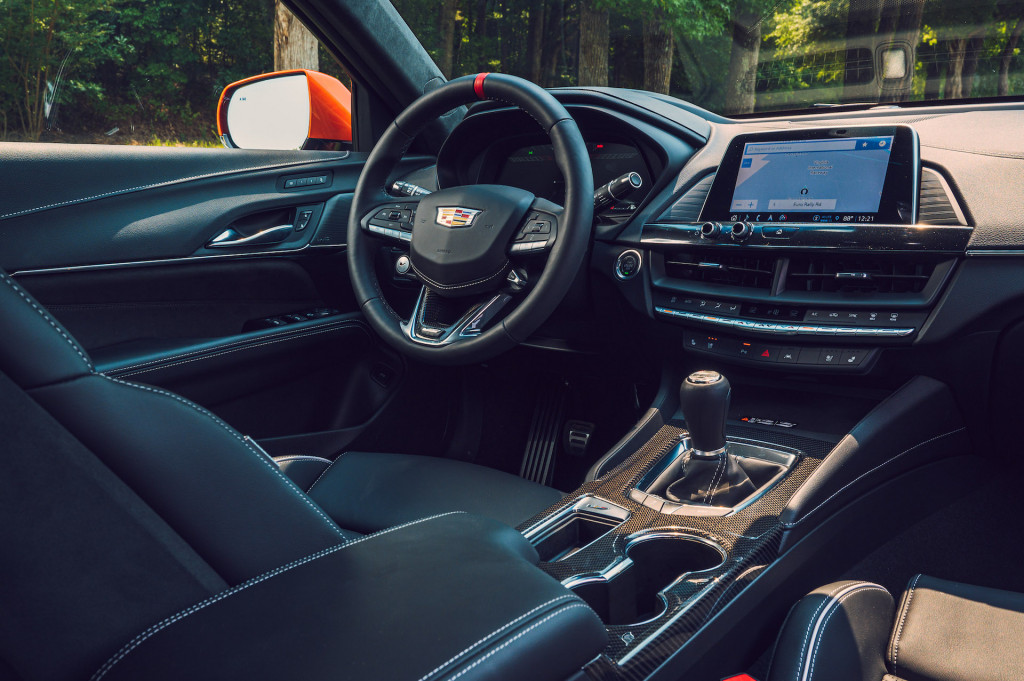
2022 Cadillac CT4-V Blackwing

2022 Cadillac CT4-V Blackwing

2022 Cadillac CT4-V Blackwing
The cabin features well-sculpted sport seats that provide support for a range of backsides. They look great in two-tone leather with a third color for the piping, and they even offer a massage function that I wish were more aggressive. The stitched dash and door panels fit the car’s luxury mission, which also includes technologies such as a 8.0-inch touchscreen, GM’s Performance Data Recorder that shows video and telemetry during track driving, the head-up display, a 14-speaker AKG audio system, and a variety of standard and optional driver-assist features.
Priced from $59,990 (a few thousand lower than the last ATS-V), the CT4-V Blackwing fills a position the BMW M3 used to occupy. It’s a performance sedan that offers a manual transmission and balances track moves with everyday comfort. Today’s high-strung M3 rides harder and is likely quicker around a racetrack, but Cadillac’s last gas-powered compact sport sedan is a joy to drive whether flat-shifting up to fifth gear at 120 mph or toddling around town.
Cadillac paid for transportation, lodging, and track time for Motor Authority to bring you this firsthand report.
